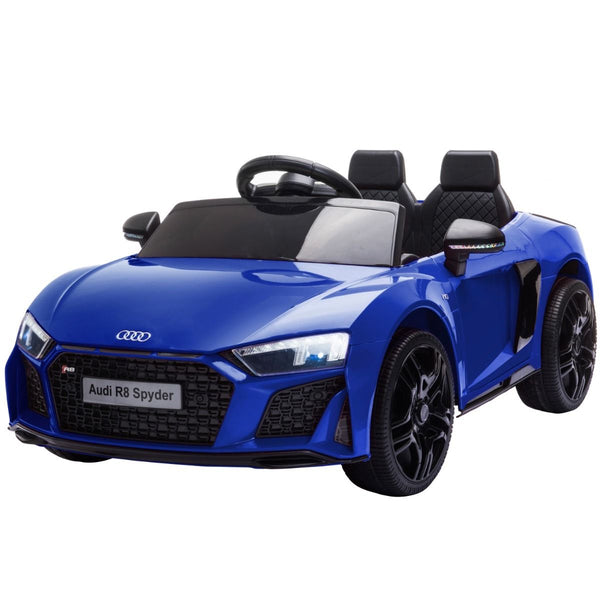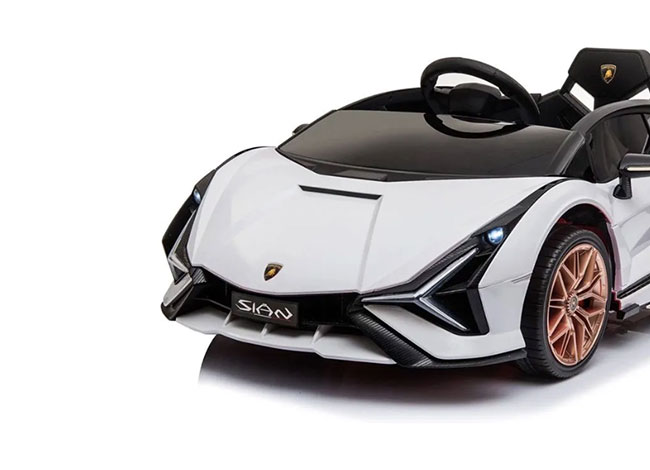Handy News To Picking Remote Control Childrens Cars
Wiki Article
What Do I Need To Know About The Battery Life And Charging Time Of An Electric Kids Car?
Understanding the charging time and battery life of children who ride electric on their' car will help you ensure that the kids have uninterrupted play time. What you should know is the type of battery.
The majority of electric ride-on cars for kids are powered by rechargeable batteries. They could be Lithium-ion or lead-acid. Lithium-ion batteries usually have a longer battery lifespan and quicker charging times than lead-acid batteries.
Capacity of Battery
The capacity of the battery, expressed in ampere-hours (Ah) or watt-hours (Wh) will determine how long the ride-on car will run on a single charge. Batteries with higher capacity provide a longer playing time before requiring recharging.
Run Time -
The run time of the electric ride-on car is referred to the length of time it will run continuously on one charge. It is affected by a variety of factors, including the capacity of the battery, power of the motor, terrain, or weight of a rider.
For electric cars The typical runtime for electric ride on cars is 30 minutes up to 2 hours from the use of a single battery. Certain battery packs with high capacity may offer longer time-to-run.
Charge Time
The charging time refers to how long it takes to completely charge the battery after it has been depleted. Charge times vary based on the battery's capacity, charger specs and the charging method.
Charge times for electric ride on vehicles are usually between 8 and 12 hours. Certain models can charge faster speeds, especially with lithium ion batteries.
It is essential to adhere to the instructions of the manufacturer when charging to ensure durability and safety of the battery. The performance of the battery and its life span is affected by either overcharging it or undercharging it.
Method of Charging
Electric ride on cars are often equipped with chargers that plug into a standard home outlet. Some models have fast charging features, or come with a charger that changes the rate of charging depending on the battery state.
Ensure that the charger port and connectors can be used with the charger provided by the ride-on vehicle to avoid damage to the battery or the electrical system.
Additional Batteries
Some electric ride on cars allow you to purchase additional batteries or batteries to prolong the playtime. Having extra batteries on hand allows you to switch out batteries that are depleted for fully charged ones, thus reducing downtime between play sessions.
Understanding the battery's lifespan and charging times of an electric ride-on children' car ensures that your child has uninterrupted playtime and adventures as they explore their surroundings. It is important to charge the battery as frequently as possible and follow proper charging practices. This will improve the battery's performance. Take a look at the recommended Mercedes ride on car for site recommendations including car on ride, remote control childrens electric cars, ride on toy, toy cars, car electric ride on, race car toy car, remote control childrens electric cars, childrens ride on, ride on car, toy toy cars and more. .

What Is The Assembly And Maintenance Requirements For Kids' Ride-On Cars?
Making and maintaining toys for ride-ons for children is crucial to maintain their safety, functionality and long-term durability. Below are the typical assembly and maintenance requirements of children's ride-on cars.
The majority of cars that ride on come partially assembled and require some assembly. Attaching the wheel, steering wheel seats, and other components to the ride-on vehicle as per the directions from the manufacturer is the most popular method.
Follow the assembly directions carefully and ensure that each piece is securely connected. In accordance with the directions finish the assembly with the tools and hardware provided.
Cleaning
The ride-on cars need to be cleaned frequently to ensure that they appear good and perform properly. Use a soft cloth or sponge soaked in moderate soap and water to wash off the exterior surfaces, taking off dust, dirt and other debris.
Be particularly attentive to places that can be prone to buildup, like undercarriage, tires and wheels. Utilize a toothbrush and brush to scrub the areas that are difficult to reach.
Avoid harsh chemicals or abrasive cleansers, as they may damage the paintwork or electronic components.
Battery Care
If the vehicle that you ride on is powered by a rechargeable battery proper battery care is essential for maintaining performance and extending battery life. These guidelines can help you take care of your battery.
Charge the battery prior to each use, and fully after each use. This will ensure that you get maximum performance.
Avoid overcharging batteries or leaving them hooked up to chargers for prolonged durations. This can cause damage to batteries and decrease their lifespan.
Store the ride-on car and battery in a cool, dry place when not in use and away from direct sunlight or extreme temperatures.
Check the battery terminals periodically for corrosion or damage. Clean them when required by using the help of a wirebrush or a terminal cleaner.
Replace the battery in case it does not hold a charge anymore or shows evidence of being damaged or degraded.
Tire Maintenance -
Inspect the tires frequently to find any indications like wear, damage, or the loss of pressure. As needed, make use of a bicycle air pump or an air compressor to blow up tires at the recommended pressure.
Examine the tread pattern on your tires for foreign objects and debris that can cause punctures or flats. Replace damaged tires and remove any obstructions.
Lubricate wheel bearings and axles regularly to decrease friction.
Sometimes, repairs or replacements are needed.
Even with routine maintenance, it's likely that the ride-on vehicles need to be fixed or parts replaced due to wear and tears or accidents.
Be on the lookout for signs of malfunction or degradation, such a strange noise and erratic behavior or loss of power. You can consult the manual for users or contact support at customer service to assist in troubleshooting and repair.
To avoid further damage, replace damaged or worn parts as soon as possible to ensure security and function.
These assembly and maintenance instructions will assist you in keeping your child's ride on car in top condition so that they can enjoy enjoyable and safe playtime. Have a look at the most popular read this for kids ride on cars for website examples including ride of car, toy the car, car toy car toy, childrens electric cars, toy a car, childrens ride on, ride ons, race car toy car, a toy car, ride on car and more. .

What Aspects Should I Be Thinking About Before Purchasing An Electric Car For My Children? What Are The Advantages And Disadvantages Of Electric Cars For Kids?
Before you purchase an electronic kids car, there are several things to think about to make sure that you select the best vehicle for your child's requirements and needs. Below are a few important factors to take into consideration along with information about sizes, prices and pros and cons.
Select an electric child's car depending on the age and size your child. Children who are smaller or younger may choose compact, lightweight cars. Children older than them and people with larger bodies may require larger vehicles that can accommodate them comfortably.
Car Size and Weight -
Electric cars for kids come in various sizes, from tiny micro-sized models, to larger-scale replicas of real cars. The size and weight of your child's car is based on their age, size, and the strength. Also consider the amount of space available for storage and play.
Price Band
The cost of electric children's cars vary widely based on factors like size, features, brand and the quality of construction. Prices for micro-sized cars range between $50 to $200. For larger cars, prices can be upwards of $800.
The Pros and Cons of -
Pros -
Electric cars for kids offer hours of entertainment and imagination for children. They can feel the thrill having their own car.
Motor Skill Development: Driving an electric vehicle can help develop fine motor and spatial awareness abilities in children.
Outdoor Play - Electric vehicles encourage outdoor activities and play. This encourages exercise and exploration.
Realistic Details - Many electric kids' cars have realistic details like working headlights, MP3 player compatibility and the sound of the horn. These features can enhance the playing experience.
Cons
Costs - Top-quality electronic kids cars aren't cheap and include licensed versions of popular car brands.
Battery Life - Electric cars depend on rechargeable batteries for power. These batteries can have limited run time and require frequent recharge.
Safety Issues - Electric cars can pose safety risks, including collisions, falls and entrapment if not used responsibly and under adult supervision.
Maintenance and Assembly: Some electric cars need assembly when they arrive. They also require regular maintenance including repairs and maintenance of the battery.
Features and Accessories
Take a look at the options and features that you can get for your electric vehicle for children. Examples include working headlights and the sound of a horn. Choose a car that comes with features and accessories that work with the preferences of your child.
The best electric car for your kid will ultimately depend on their age, their size, their preferences and budget. Research to compare models as well as read reviews, then consider the pros and cons before making a choice. Take a look at the recommended Mercedes ride on car kidscars.co.uk info for website examples including electric ride on cars, toy a car, electric toy car, 2 seater electric cars, race car toy car, two seater electric cars, race car toy, car toy car toy, electric two seater cars, childs car toy and more. .
